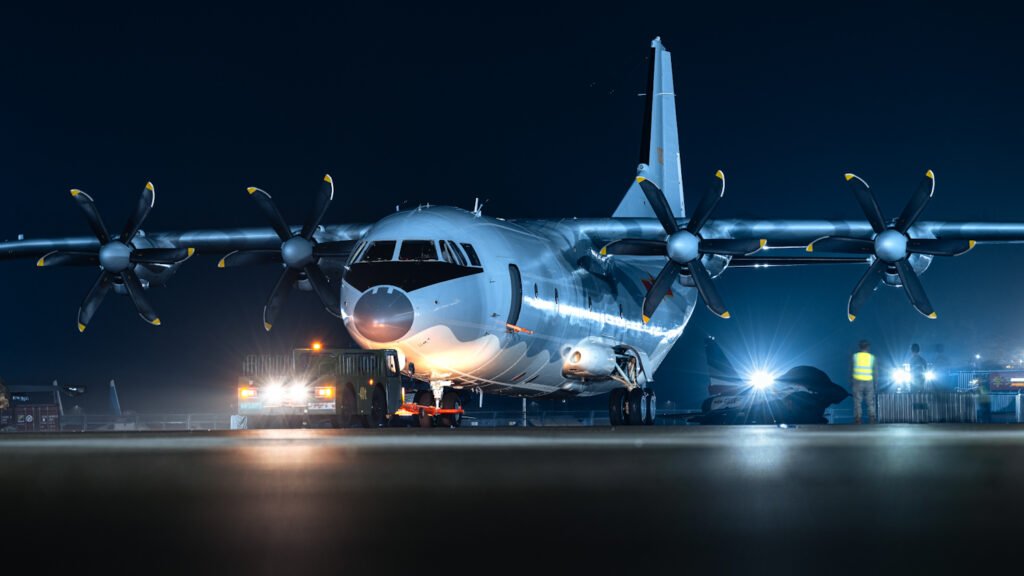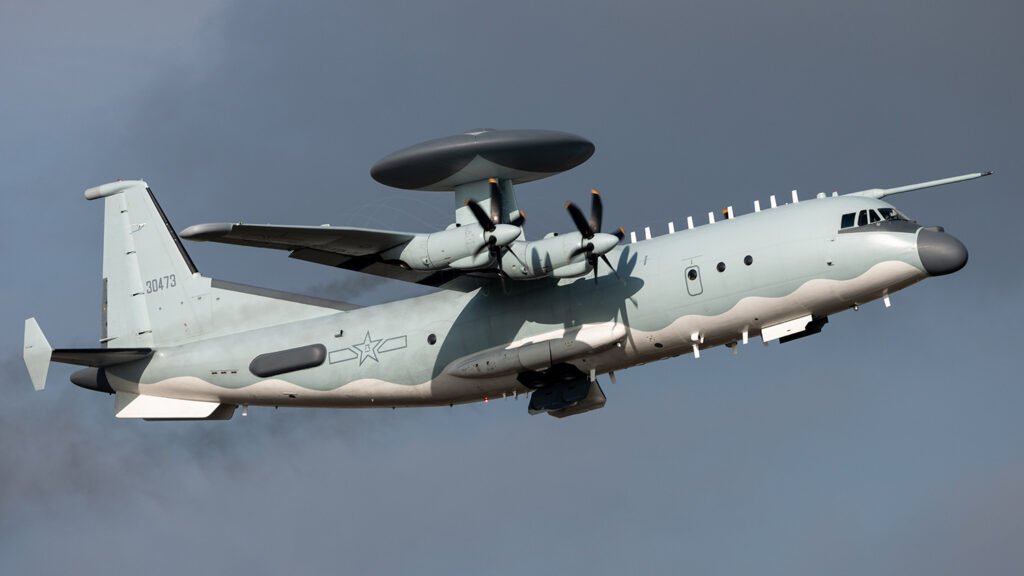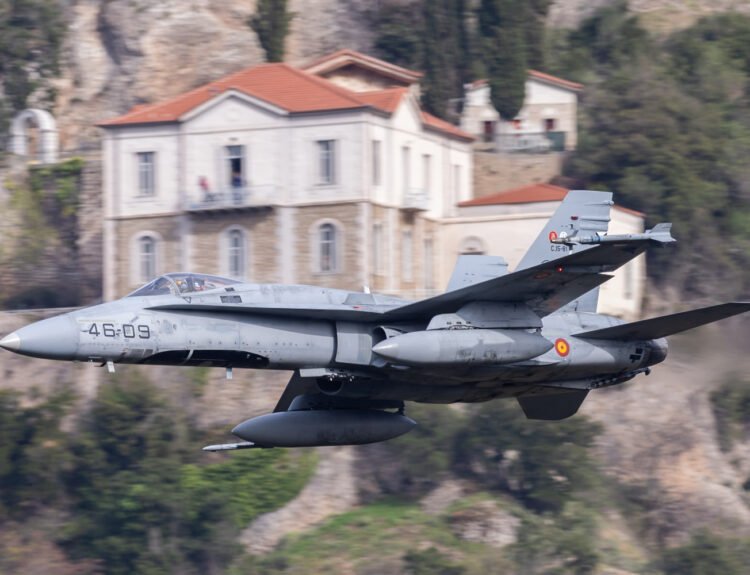During the 2024 International Aviation & Aerospace Exhibition (Zhuhai Airshow), the KJ-500A AEWCS was on display once again. The KJ-500A is an upgraded version of the original KJ-500, with several enhancements including the addition of a refueling probe above its nose. Photo By Tom Wu
At this year’s Zhuhai Airshow, several special mission aircraft based on the Y-9 platform made a rare joint appearance, drawing significant public attention. Among them, the Y-8Q , also known as KQ-200, (Kongqian referring to “airborne anti-submarine” in Chinese) or GX-6, is the anti-submarine patrol aircraft showcased for the first time in public, standing out as a major highlight.
Meanwhile, the KJ-500A(Kongjing-500A, Kongjing referring to “Air Warning” in Chinese) AEWCS, also based on the Y-9 platform, made another appearance—further underscoring the growing significance and wide-ranging applications of the Y-9 series in the PLA Air Force and Navy, particularly in the field of electronic warfare.”
The Y-9 Platform: Derived from the Y-8, Serving as a Versatile Backbone for Special Mission Aircraft


The Y-9 (also known as Y-8F-600) is a medium-sized, medium-range turboprop transport aircraft developed by Shaanxi Aircraft Industry Group as an upgraded version of the Y-8 platform. Powered by four WJ-6C turboprop engines, each fitted with six-blade JL-4 composite propellers, the Y-9 features major improvements over the Y-8 in avionics, digital cockpit systems, and propulsion—offering greater reliability, longer range, and increased payload capacity. While its base configuration serves as a tactical transport aircraft, the Y-9 has been successfully adapted into a versatile platform for special mission roles, now widely deployed to support various operational requirements across the PLA.
The Y-8Q: Closing the ASW Gap with Shore-Based Maritime Patrol

The Y-8Q is China’s first fixed-wing ASW patrol aircraft. Since entering service in 2015, over 50 units have reportedly been delivered.The Y-8Q is equipped for a range of ASW missions, including patrol, surveillance, and target engagement. It features a nose-mounted radar housed in a spherical radome, a magnetic anomaly detector (MAD) boom at the tail, an electro-optical turret under the fuselage, sonobuoy launch points, and a weapons bay capable of carrying torpedoes and depth charges. The sonar-guided depth charges, offer a low-cost alternative to torpedoes and can strike submarines at depths of up to 600 meters.
With a maximum range of over 5,000 km, the Y-8Q outperforms older Chinese ASW aircraft like the Be-6 and SH-5. However, it still lags behind international counterparts such as the U.S. Navy’s P-8A Poseidon, which boasts an 8,300 km range, higher speed, and the ability to carry anti-ship missiles.

The Y-8Q fills a critical gap in the PLA Navy’s fixed-wing ASW capabilities, which were previously reliant on helicopters like the Z-9C, Ka-28, and Z-18F. Now deployed across all three major fleets, it plays a key role in strengthening shore-based ASW operations. Foreign analysts estimate that China may ultimately field 100 to 200 Y-8Q aircraft.
In recent exercises, the Y-8Q has also demonstrated secondary capabilities such as deploying depth charges against surface targets, aligning with the PLA Navy’s goal of developing multi-role, cost-effective systems for maritime defense. While future upgrades based on larger platforms like the C909, C919, or C929 are anticipated, the Y-8Q will remain the backbone of China’s shore-based ASW efforts for the foreseeable future.
The KJ-500A: Extending the Reach of AEWC and Enhancing Electronic Warfare Capabilities
The KJ-500 is the third-generation airborne early warning (AEW) aircraft of the PLAAF. It features digital array radar technology with advanced intelligence processing and anti-jamming capabilities, bringing its overall performance up to international standards. Based on the Y-8/9 platforms, the KJ-500 offers extended operational range and endurance, making it well-suited for regional conflicts and limited-scale warfare. Additionally, the platform is free from export restrictions.


The KJ-500A is an upgraded version of the KJ-500, with the most noticeable enhancement being the addition of an aerial refueling probe on the nose. With support from the new Y-20U tanker, it overcomes the limited range of the Y-9 platform, significantly extending its operational reach and enabling early warning and command missions at greater distances. Moreover, the KJ-500A features improved radar and mission systems, offering markedly enhanced performance in early warning, command and control, and extended-range maritime operations compared to its predecessor.

The previous-generation AEW aircraft, the KJ-200, was equipped with a “balance beam”-style active electronically scanned array (AESA) radar, which had inherent blind spots in the forward and rear directions. In contrast, the KJ-500 is fitted with a disc-shaped AESA radar, providing 360-degree coverage and superior altitude measurement capabilities compared to conventional beam-scanning radars. With the further upgrades introduced on the KJ-500A, the PLAAF’s situational awareness in the air has become a formidable deterrent.







